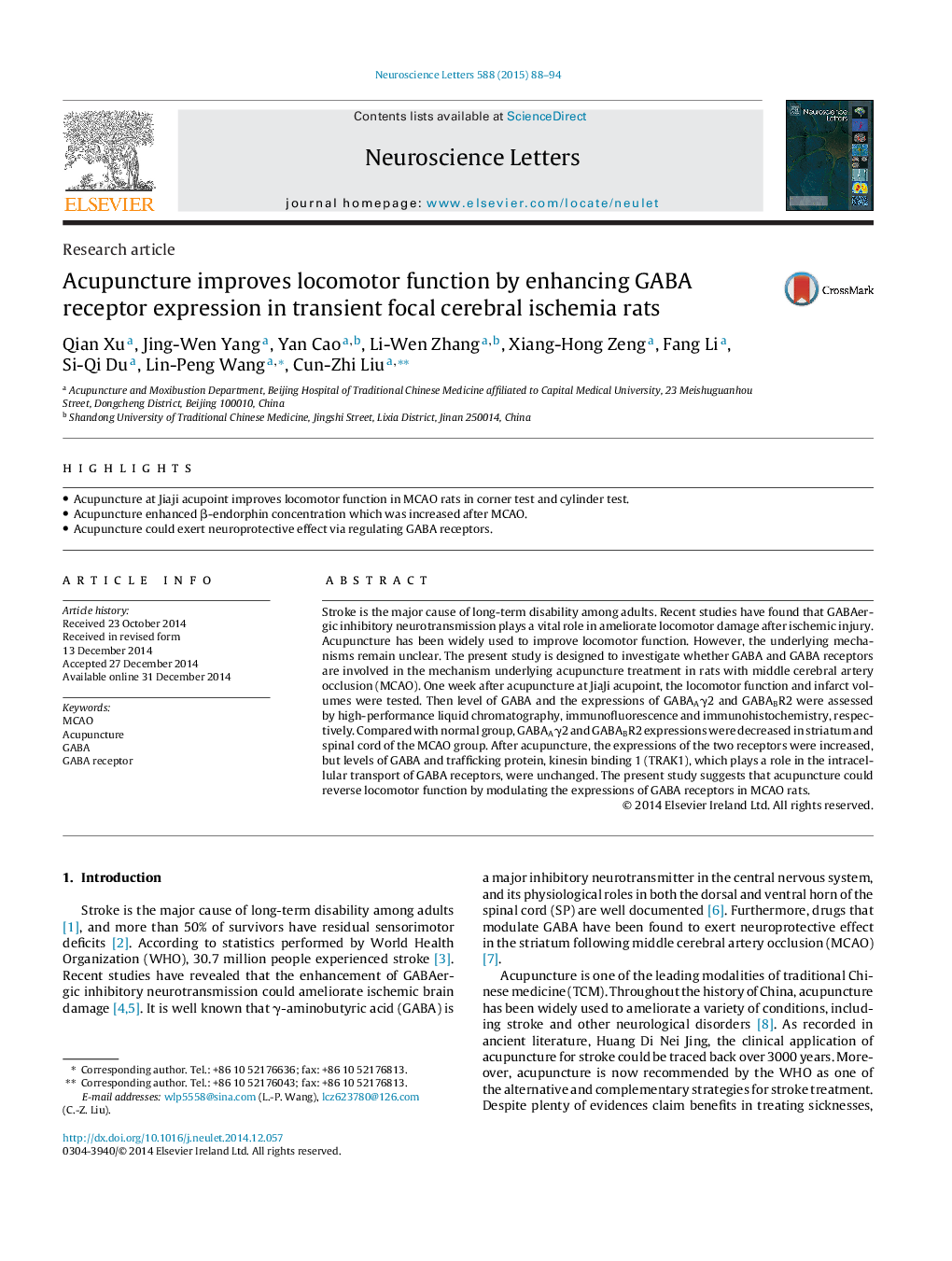| Article ID | Journal | Published Year | Pages | File Type |
|---|---|---|---|---|
| 6281291 | Neuroscience Letters | 2015 | 7 Pages |
Abstract
Stroke is the major cause of long-term disability among adults. Recent studies have found that GABAergic inhibitory neurotransmission plays a vital role in ameliorate locomotor damage after ischemic injury. Acupuncture has been widely used to improve locomotor function. However, the underlying mechanisms remain unclear. The present study is designed to investigate whether GABA and GABA receptors are involved in the mechanism underlying acupuncture treatment in rats with middle cerebral artery occlusion (MCAO). One week after acupuncture at JiaJi acupoint, the locomotor function and infarct volumes were tested. Then level of GABA and the expressions of GABAAγ2 and GABABR2 were assessed by high-performance liquid chromatography, immunofluorescence and immunohistochemistry, respectively. Compared with normal group, GABAAγ2 and GABABR2 expressions were decreased in striatum and spinal cord of the MCAO group. After acupuncture, the expressions of the two receptors were increased, but levels of GABA and trafficking protein, kinesin binding 1 (TRAK1), which plays a role in the intracellular transport of GABA receptors, were unchanged. The present study suggests that acupuncture could reverse locomotor function by modulating the expressions of GABA receptors in MCAO rats.
Keywords
Related Topics
Life Sciences
Neuroscience
Neuroscience (General)
Authors
Qian Xu, Jing-Wen Yang, Yan Cao, Li-Wen Zhang, Xiang-Hong Zeng, Fang Li, Si-Qi Du, Lin-Peng Wang, Cun-Zhi Liu,
